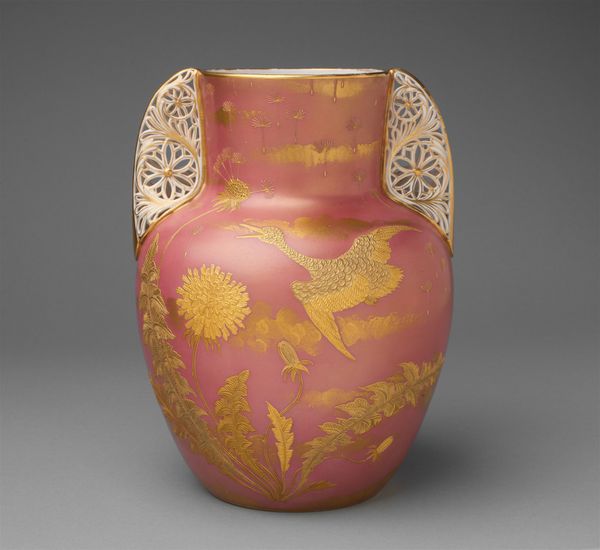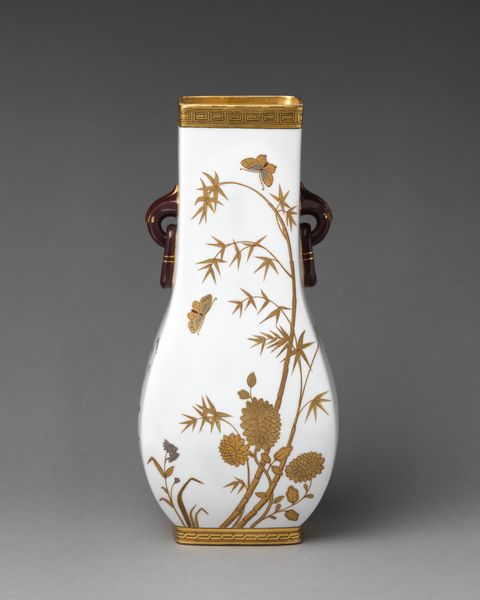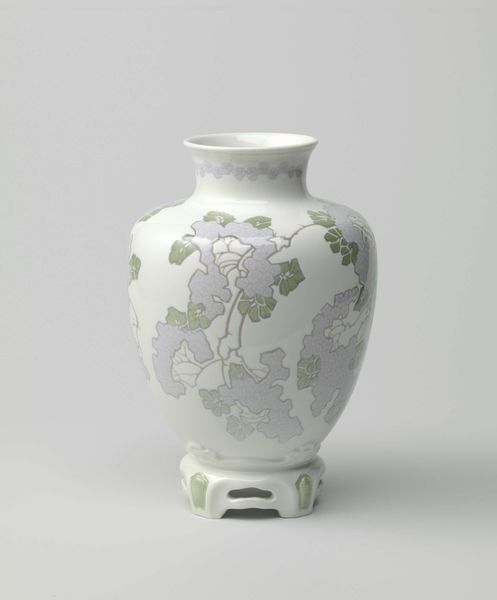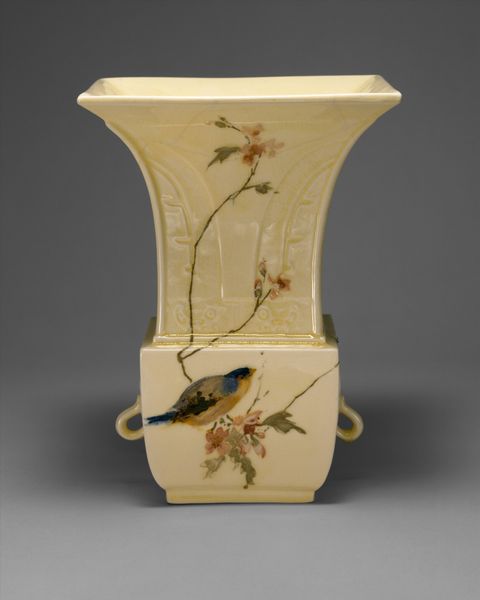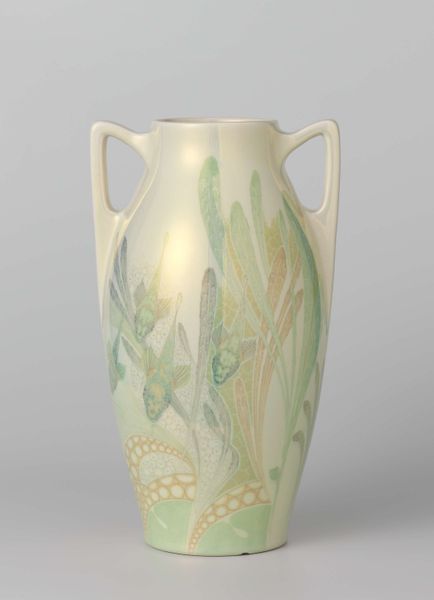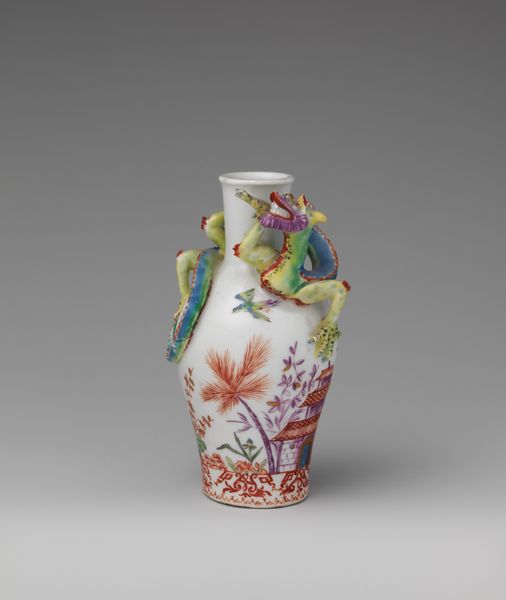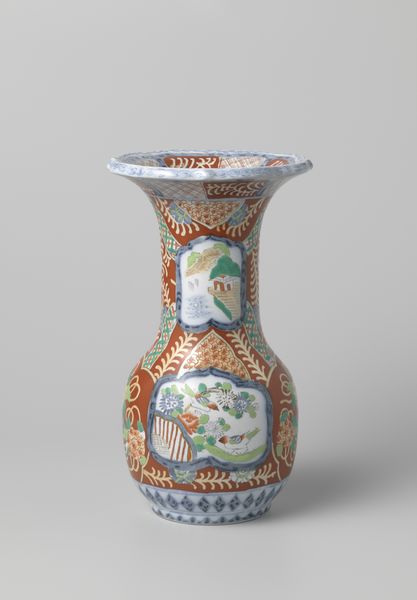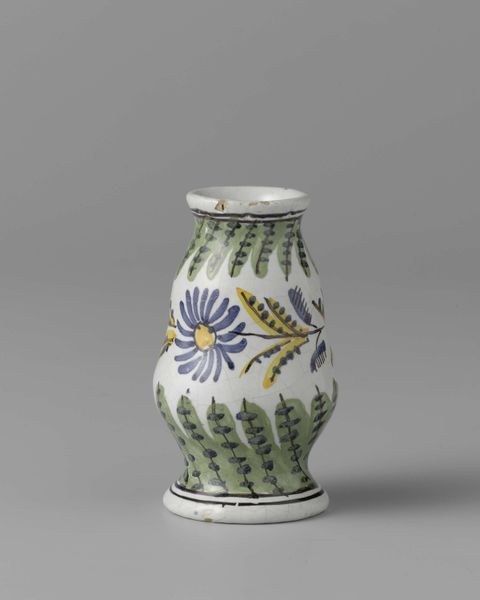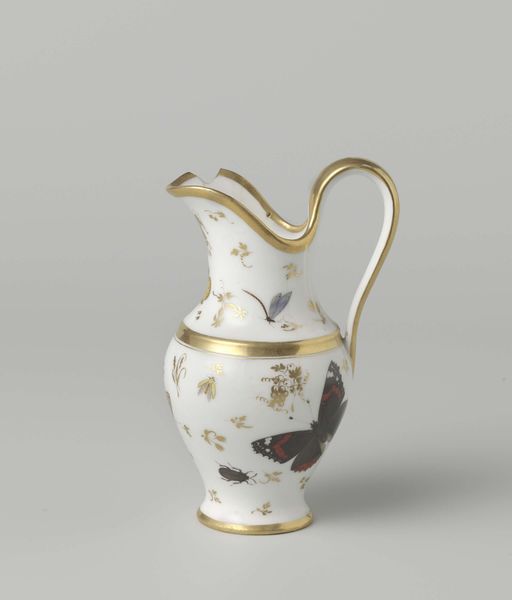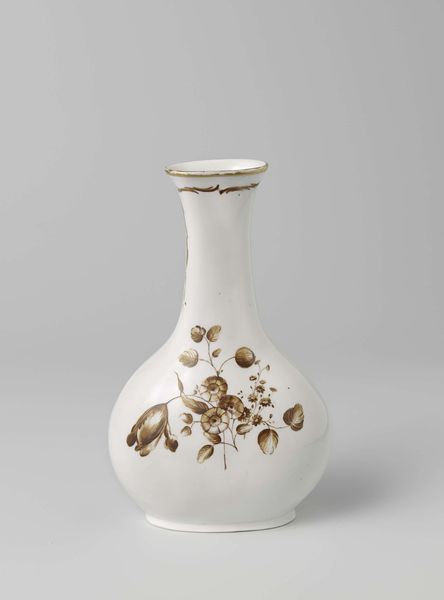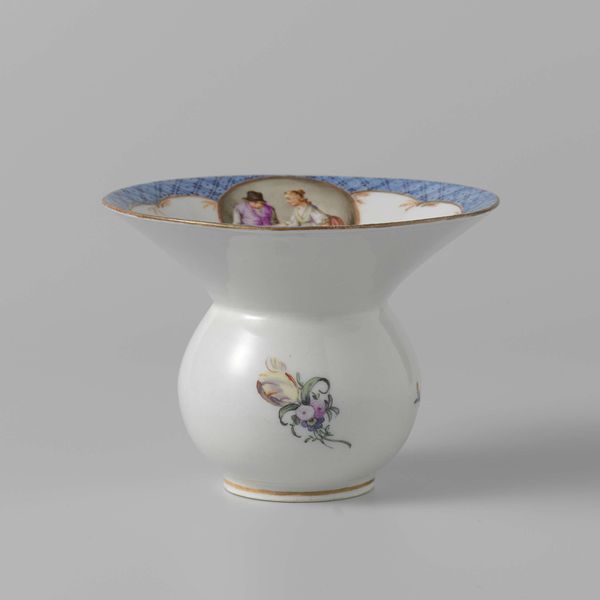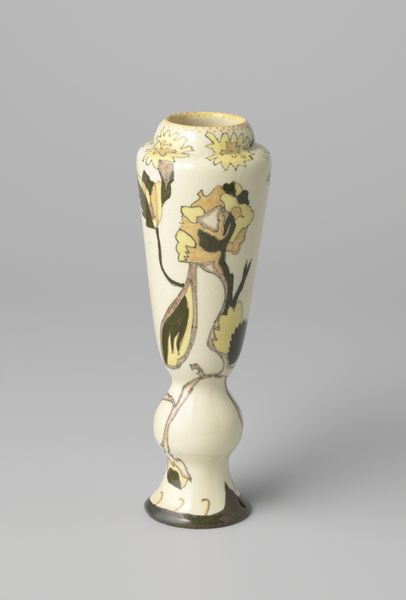
ceramic, earthenware
#
ceramic
#
earthenware
#
plant
#
united-states
#
decorative-art
Dimensions: 5 1/2 x 3 7/8 x 2 in. (14 x 9.8 x 5.1 cm)
Copyright: Public Domain
Curator: Before us, we have a pitcher created between 1880 and 1890 by Ott and Brewer. The piece currently resides at the Metropolitan Museum of Art. Editor: It’s delicately rendered—I’m struck by the almost ghostly quality of the botanical designs against the white earthenware. Curator: Ott and Brewer were significant players in the American decorative arts movement. They consciously tried to compete with European ceramics. Their productions speak to shifting societal tastes toward more ornate designs during the Gilded Age. Editor: What I find fascinating is the material itself: earthenware, often considered more "common" than porcelain. That Ott and Brewer chose it for a pitcher aimed at a wealthy clientele suggests a democratization, or perhaps appropriation, of materials in art. The labor involved in carefully painting each blade of grass onto the surface—how does that elevate the value of the seemingly humble material? Curator: That’s a sharp observation! Mass production techniques were rapidly evolving then. Artisans who once made purely functional wares had to compete with factories. A pitcher like this became a symbol, demonstrating the unique craftsmanship and artistic skill which industrial production couldn’t easily replicate, distinguishing it for the elite market. Editor: The pitcher walks this interesting line between nature and industry, handcraft and market value. And it poses this interesting question: Who benefits from it? It seems to reflect a yearning to reconnect with natural, handcrafted forms during this period of immense industrialization, for the elites to showcase their own cultivated taste, and Ott and Brewer definitely gave them that medium. Curator: Indeed. Considering its cultural moment and the hands that shaped it adds more richness to appreciating the design. Editor: And understanding the labor and materials that form it changes the way we relate to something that appears, at first glance, simply decorative.
Comments
No comments
Be the first to comment and join the conversation on the ultimate creative platform.
